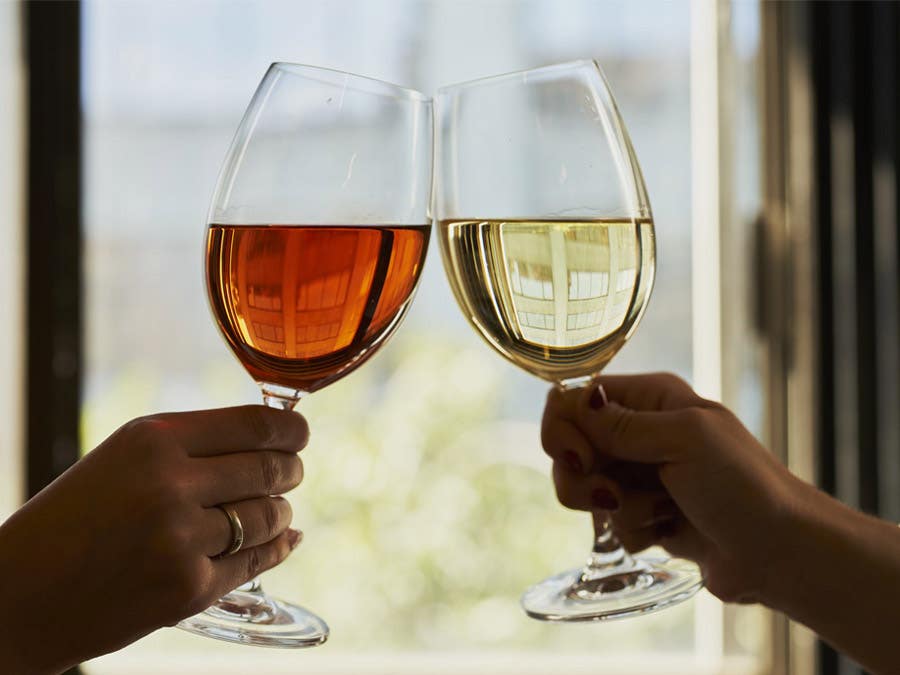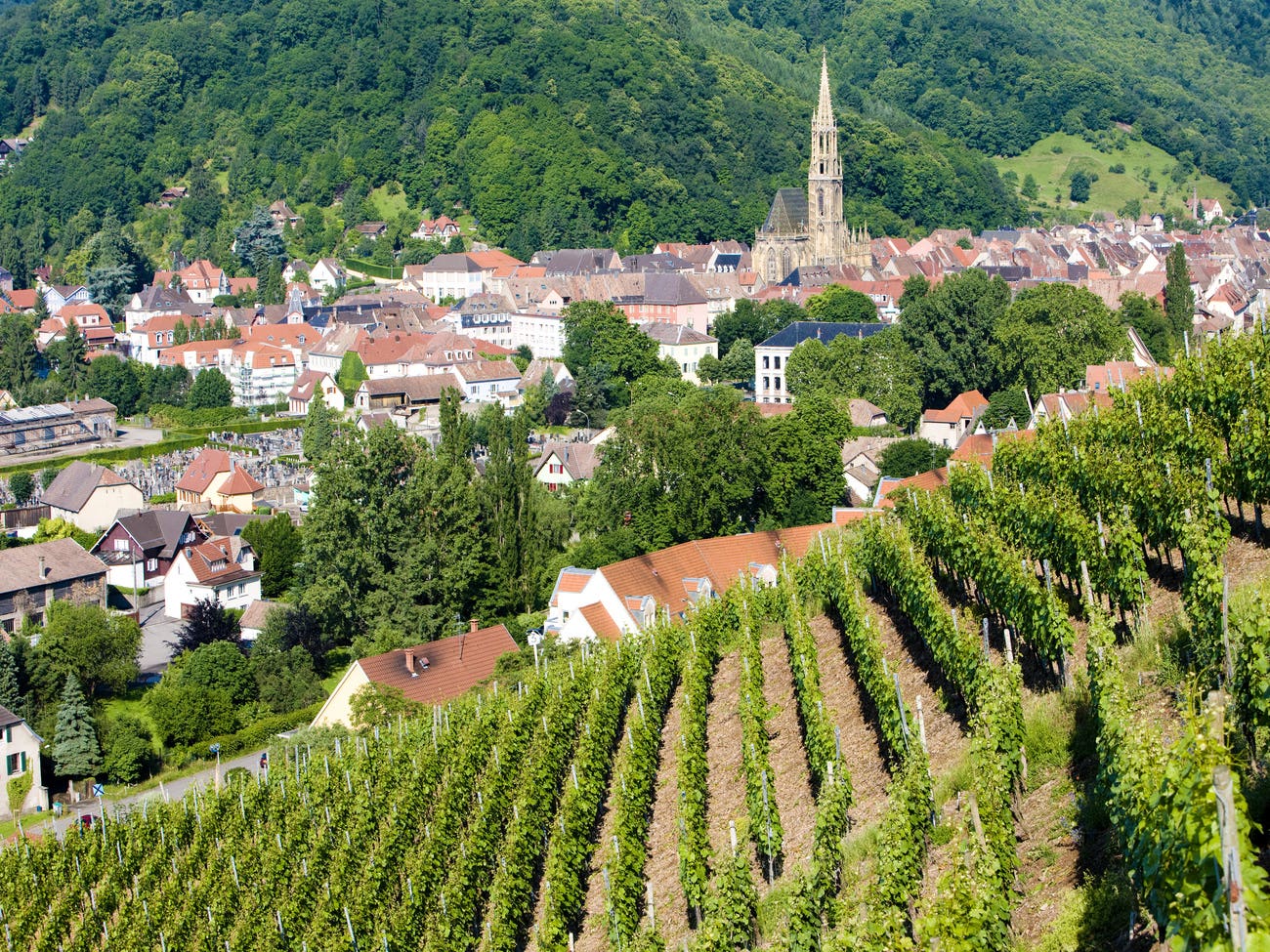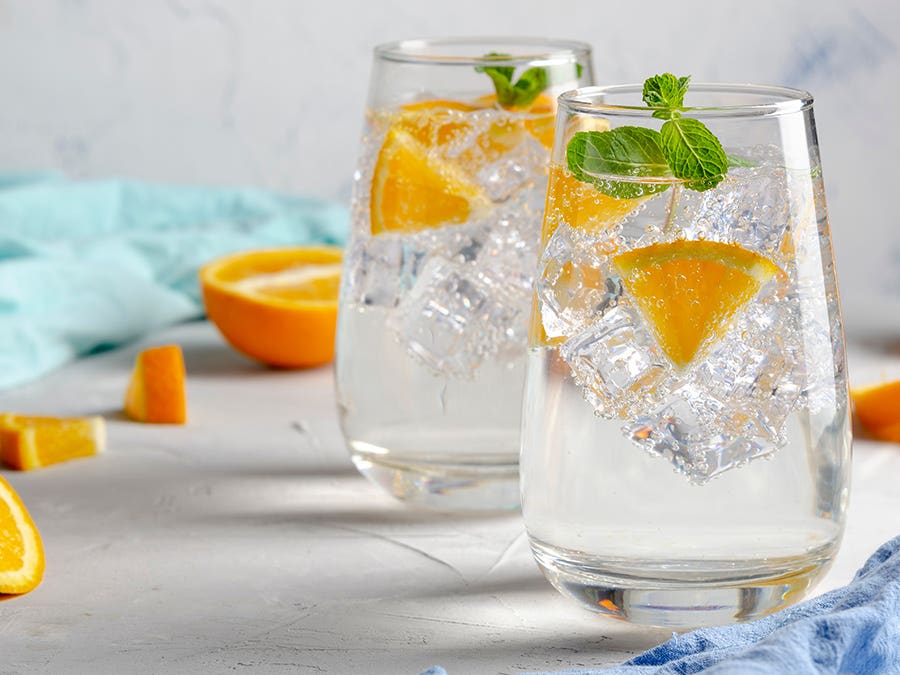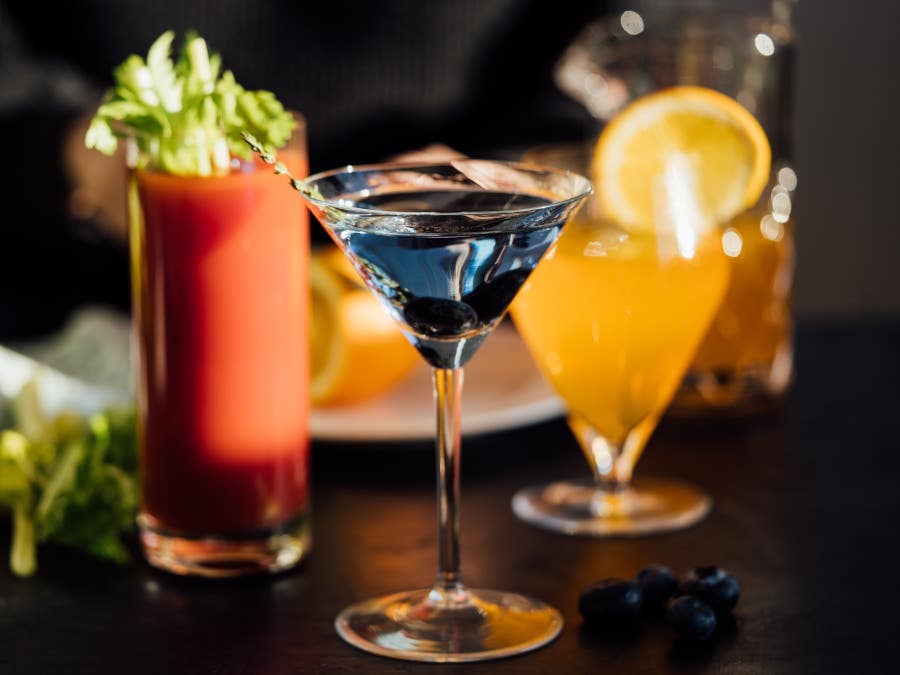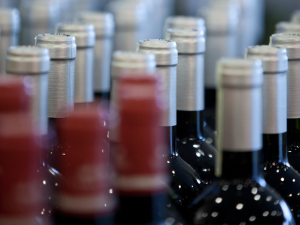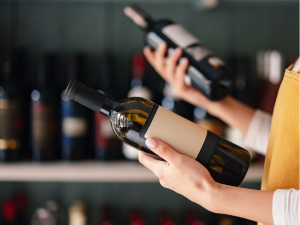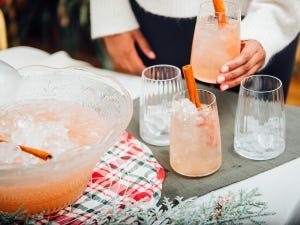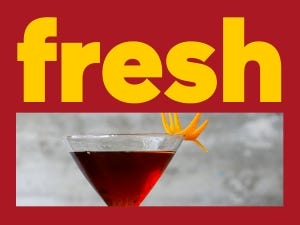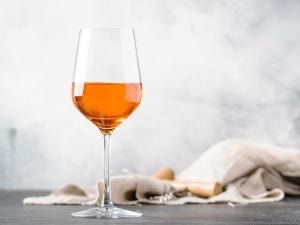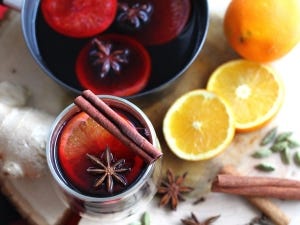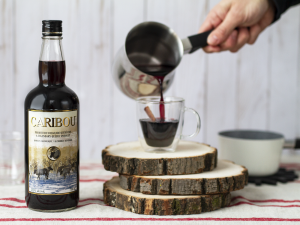To make your search easier
Whether you want to identify products that have fewer calories and are therefore lighter in alcohol, or to narrow down your search for residual sugars in wines, you can now use the filters for this purpose in the left-hand menu on the SAQ.com page, in addition to the product sheet, which will give you more information on each product.
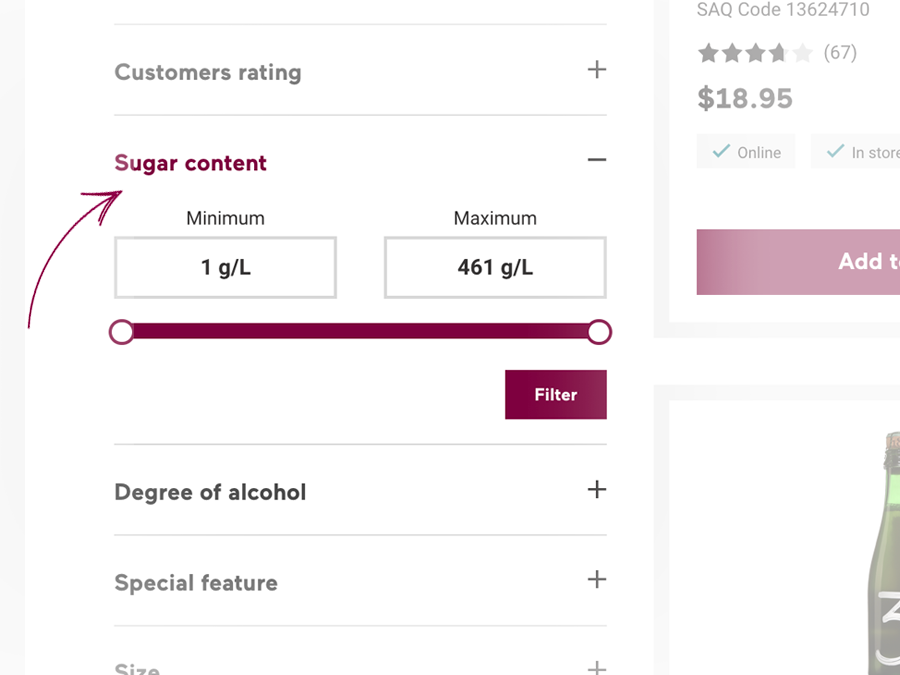



Did you know?
- Did you know that over 98% of the calories in your glass of "dry" wine (see sugar/liter ratios) come from the alcohol, not the residual sugars?
- A standard glass of wine (125 ml) with 13% alcohol and 2 grams of sugar/litre contains 92 calories from alcohol, and only one calorie from the dreaded sugar that too many people demonize when it comes time to buy a bottle.
Sugar and wine: Let's examine the situation
Of course, wine comes from grapes, a sweet fruit. It is thanks to this fact that, under the action of yeasts, fermentation can take place in order to obtain an alcoholic beverage. Not all sugars are fermentable, and it is up to the producer to leave more or less in the process for reasons of tradition, style or adjustment. Modern oenology has discovered methods to add a bit of sweetness to the wine after vinification, mainly by adding a bit of concentrated must (from the same grape juice) before bottling. This allows to intensify the fruity flavors, to give it roundness, or to balance an acidity considered too biting... as we would do it ourselves in a lemonade or a spaghetti sauce.
Minimal quantities
Does this mean we should be concerned?
Most table wines are dry (less than 4 grams of sugar per liter) which is less than ½ gram of sugar per glass.
![]()
To compare, that's 12 times less than a single packet of sugar at the local coffee shop.
![]()
![]()
A can of soft drink? That's 30 grams.
![]()
![]()
![]()
To find the same amount of sugar in wine, you would have to ingest 60 glasses of standard wine for a single serving of cola. Obviously, we're not suggesting that.
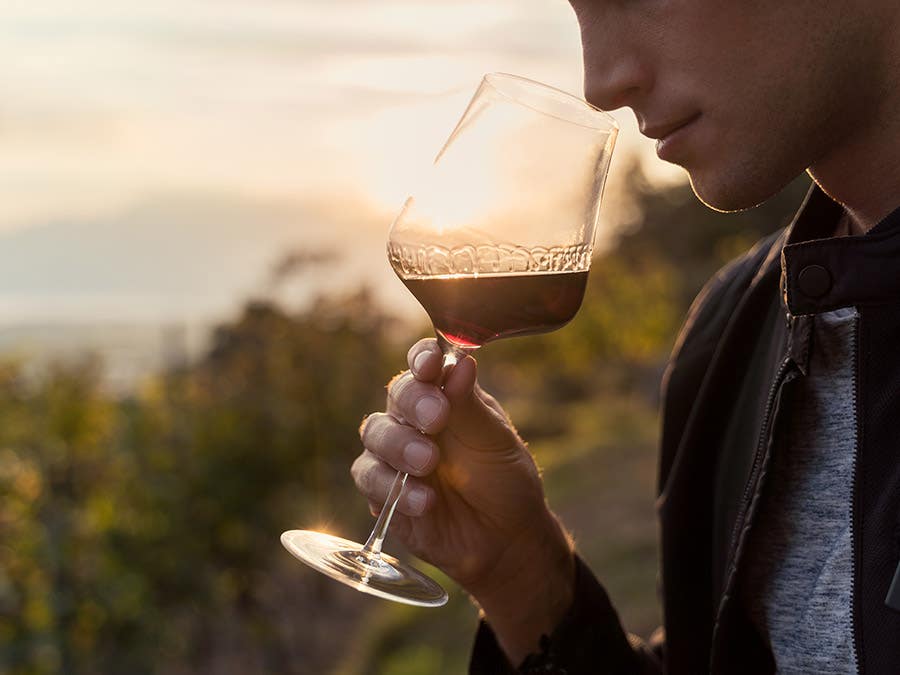

The presence of sugar: a matter of taste!
Excluding dessert wines that contain much more, most wines offered at the SAQ are below the limit of taste perception of sweetness (the famous 4 grams per liter). Beyond this amount, one will begin to detect its presence by its flavor, also the sweeter texture it will bring to the liquid. But it will add at most 2 or 3 calories to your glass of wine, which is what your body would need as energy to do 5 sit-ups, say.
Verdict
Now that you understand the content, the role and the real caloric contribution of sugar in your Saturday night drink, you should certainly favour alcohol moderation as always... But trust your personal taste rather than a number that is far from being diabolical!
- Wine (red, white, rosé)
DRY 0 - 4 g/L 
MEDIUM-DRY 4.1 - 12 g/L 
MEDIUM-SWEET 12.1 - 50 g/L 
SWEET >50 g/L 
- Sparkling wine
BRUT NATURE < 3 g/L 
EXTRA-BRUT 0 - 6 g/L 
BRUT < 12 g/L 
EXTRA-DRY 12 - 17 g/L 
DRY 17-32 g/L 
MEDIUM-DRY 32-50 g/L 
Interval limit: between1.2 to 60 g/L - In comparison
Soft drink 330 ml 30 g of sugar 
 approximately 6 g of sugar
approximately 6 g of sugar
Related Posts
-
Read more
Many believe that Alsatian wines are sweet and mild. But is that fact or fiction?
-
Read more
Dry month, #sobersunday, #sobercurious…More than just a trend, the shift to no alcohol is becoming an increasingly popular life choice. Discover the amazing world of nonalcoholic drinks, which covers everything from cocktails to wine and ready-to-drink options!
 Free in-store delivery with purchases of $75+ in an estimated 3 to 5 business days.
Free in-store delivery with purchases of $75+ in an estimated 3 to 5 business days.
